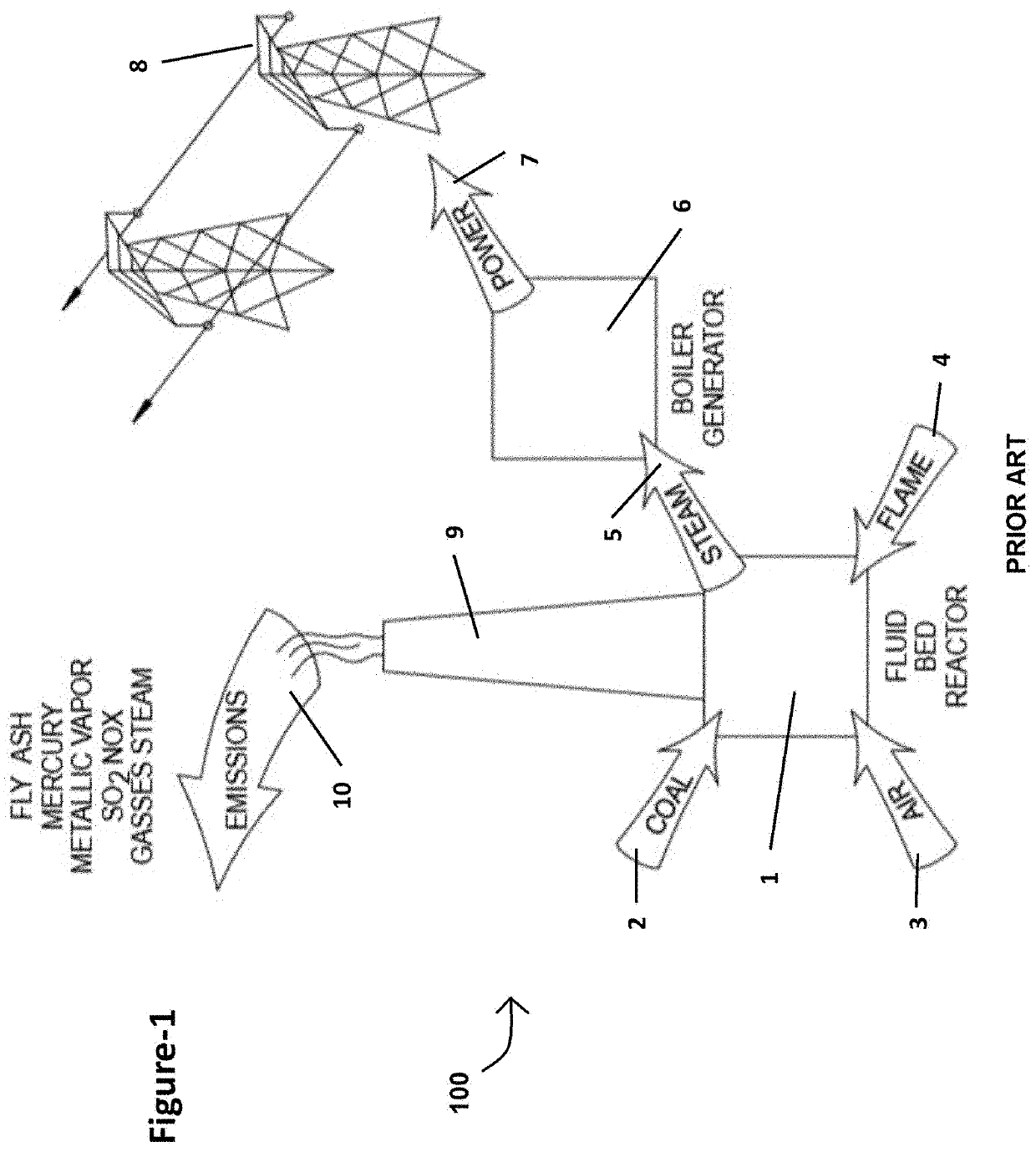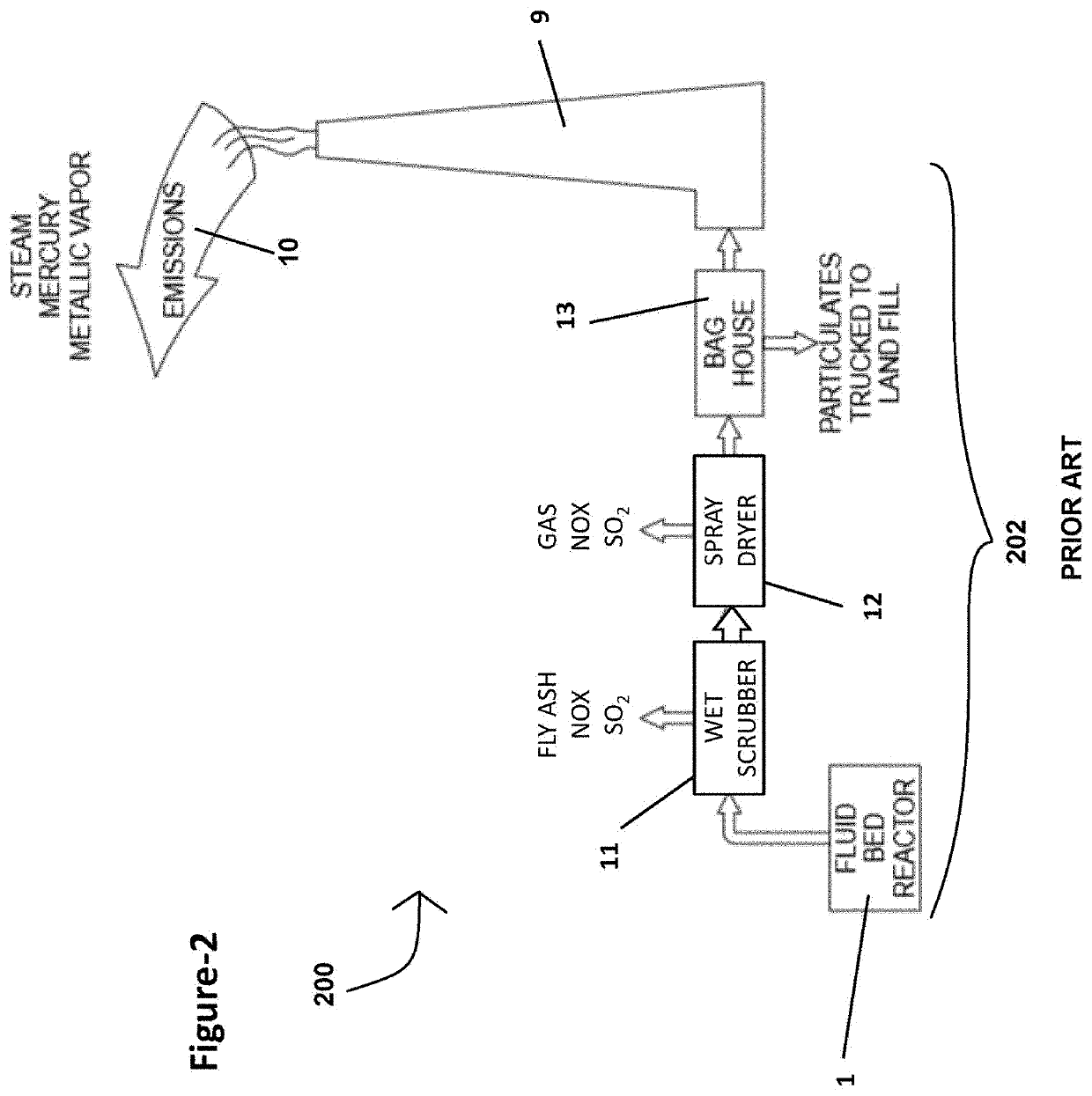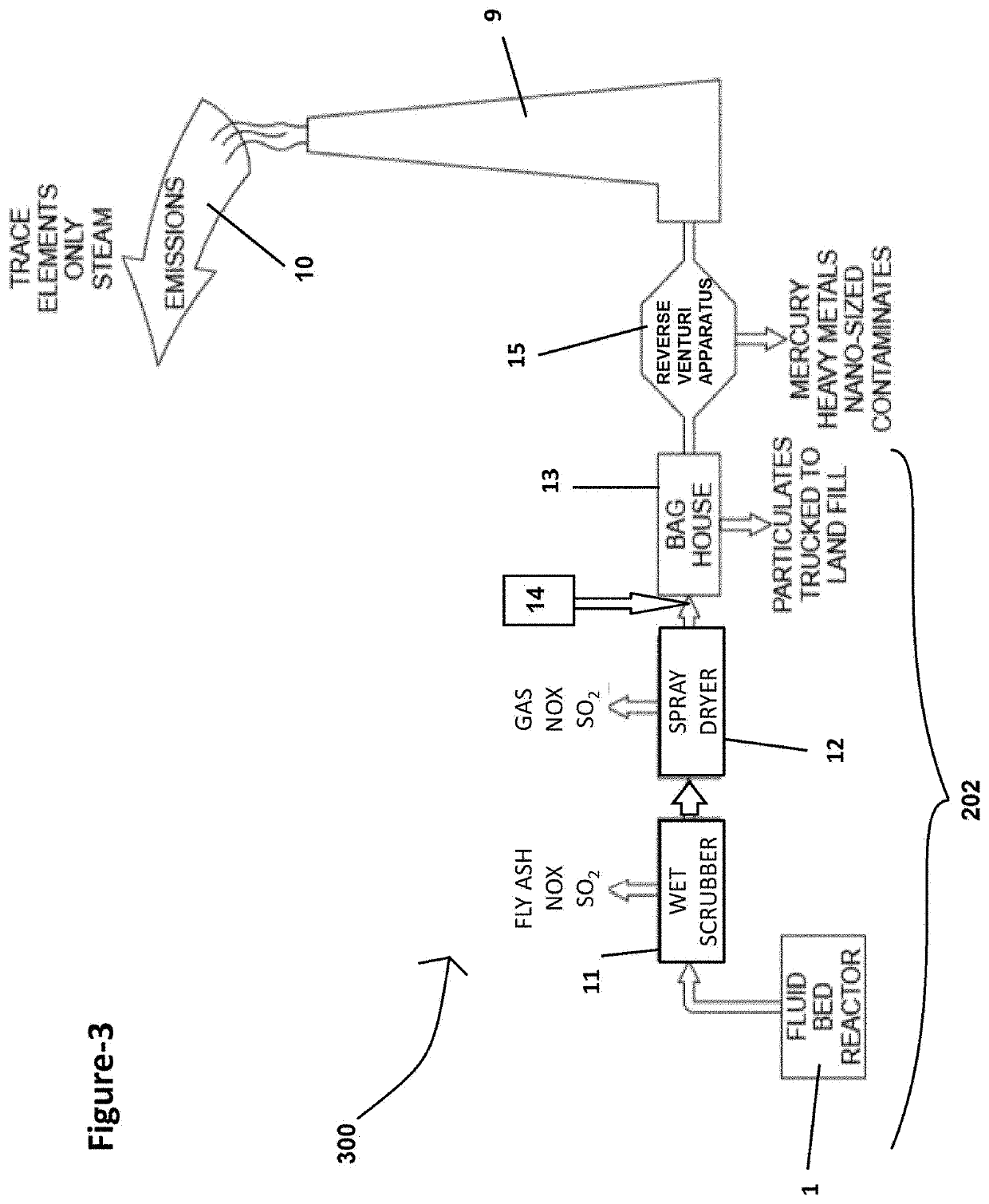Extraction of target materials using czts sorbent
- Summary
- Abstract
- Description
- Claims
- Application Information
AI Technical Summary
Benefits of technology
Problems solved by technology
Method used
Image
Examples
embodiment 1
[0265 provides a method of extracting a target material from a medium, the method comprising:[0266]contacting a copper zinc tin sulfur (CZTS) sorbent with the target material in the medium comprising the target material to form a used CZTS sorbent that comprises the target material; and[0267]separating the used CZTS sorbent from the medium.
[0268]Embodiment 2 provides the method of Embodiment 1, further comprising removing the target material from the used CZTS sorbent, to obtain an extract comprising the target material.
[0269]Embodiment 3 provides the method of any one of Embodiments 1-2, wherein the target material comprises a metal, a heavy metal, a precious metal, a rare earth metal, sulfur, nitrogen, nitrogen dioxide, a nitrate, phosphorus, a phosphate, sulfur, sulfur dioxide, ammonia, boron, a compound thereof, a complex thereof, a salt thereof, an organic solvent, or a combination thereof.
embodiment 4
[0270 provides the method of any one of Embodiments 1-3, wherein the target material comprises a precious metal.
[0271]Embodiment 5 provides the method of any one of Embodiments 1-4, wherein the target material comprises a coinage group metal, a platinum group metal, or a combination thereof.
[0272]Embodiment 6 provides the method of any one of Embodiments 1-5, wherein the target material comprises gold, silver, a compound thereof, a complex thereof, a salt thereof, an oxide thereof, or a combination thereof.
[0273]Embodiment 7 provides the method of any one of Embodiments 1-6, wherein the target material comprises gold, silver, or a combination thereof.
[0274]Embodiment 8 provides the method of any one of Embodiments 1-7, wherein the target material comprises ruthenium, rhodium, palladium, osmium, iridium, platinum, a compound thereof, a complex thereof, a salt thereof, an oxide thereof, or a combination thereof.
[0275]Embodiment 9 provides the method of any one of Embodiments 1-8, wher...
embodiment 19
[0285 provides the method of any one of Embodiments 1-18, wherein the medium comprises liquid, gas, or a combination thereof.
[0286]Embodiment 20 provides the method of any one of Embodiments 1-19, wherein the medium comprises water, an organic solvent, an oil, or a combination thereof.
[0287]Embodiment 21 provides the method of any one of Embodiments 1-20, wherein the medium is an aqueous medium.
[0288]Embodiment 22 provides the method of Embodiment 21, wherein water is 50 wt % to 100 wt % of the aqueous medium.
[0289]Embodiment 23 provides the method of any one of Embodiments 21-22, wherein water is 80 wt % to 100 wt % of the aqueous medium.
[0290]Embodiment 24 provides the method of any one of Embodiments 1-23, wherein the medium comprises liquid or gaseous effluent from a coal-fired electrical plant.
[0291]Embodiment 25 provides the method of any one of Embodiments 1-24, wherein the medium comprises flue gas from a coal-fired electrical plant, water from the coal-fired electrical plan...
PUM
| Property | Measurement | Unit |
|---|---|---|
| Toxicity | aaaaa | aaaaa |
Abstract
Description
Claims
Application Information
 Login to View More
Login to View More - R&D Engineer
- R&D Manager
- IP Professional
- Industry Leading Data Capabilities
- Powerful AI technology
- Patent DNA Extraction
Browse by: Latest US Patents, China's latest patents, Technical Efficacy Thesaurus, Application Domain, Technology Topic, Popular Technical Reports.
© 2024 PatSnap. All rights reserved.Legal|Privacy policy|Modern Slavery Act Transparency Statement|Sitemap|About US| Contact US: help@patsnap.com










